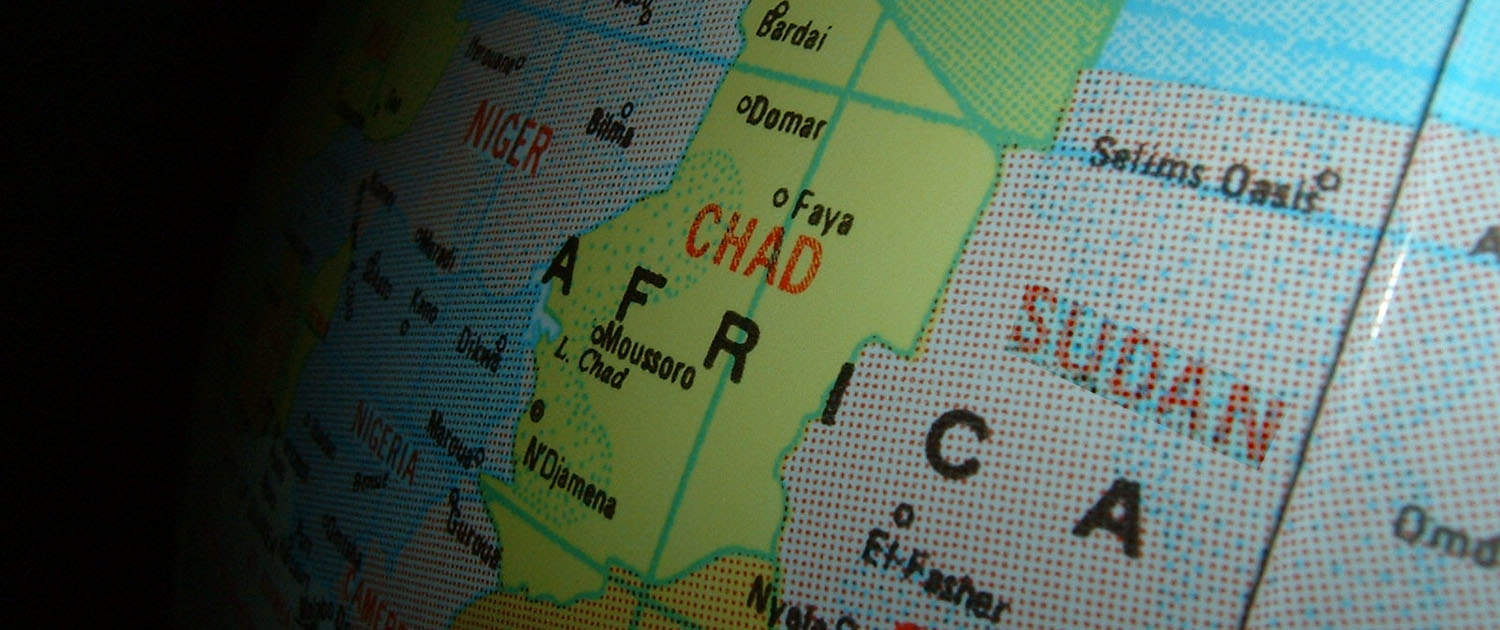In 2024, the central African country Chad has experienced several Internet outages (Figure 1), including an intentional, ongoing shutdown that began on 28 February that has cost the country more than USD $1M in GDP loss.
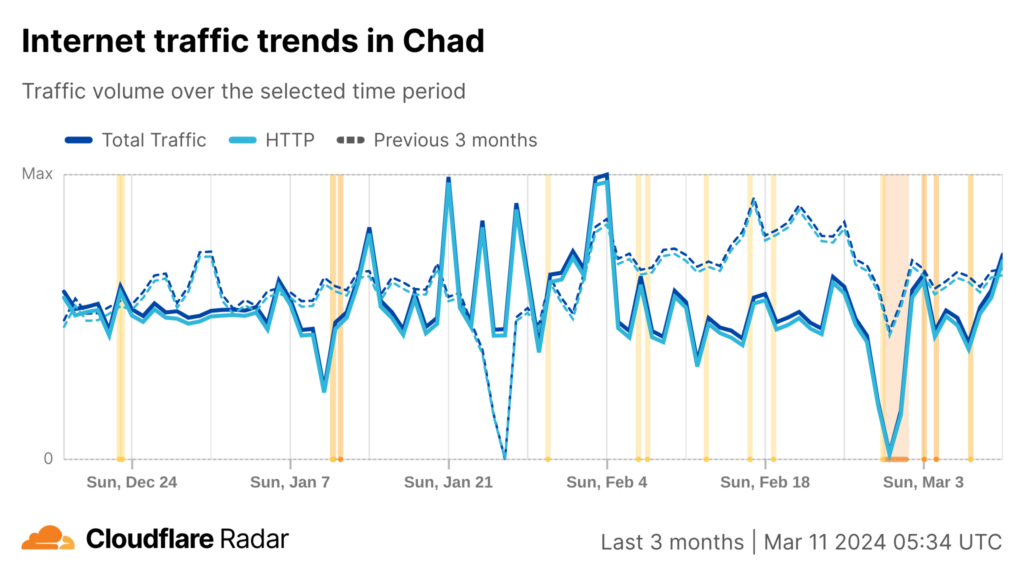
Most of these outages presumably stem from the country’s poor Internet resilience — 24% as per the Pulse Internet Resilience Index, ranked 2nd last for all African countries (Figure 2).
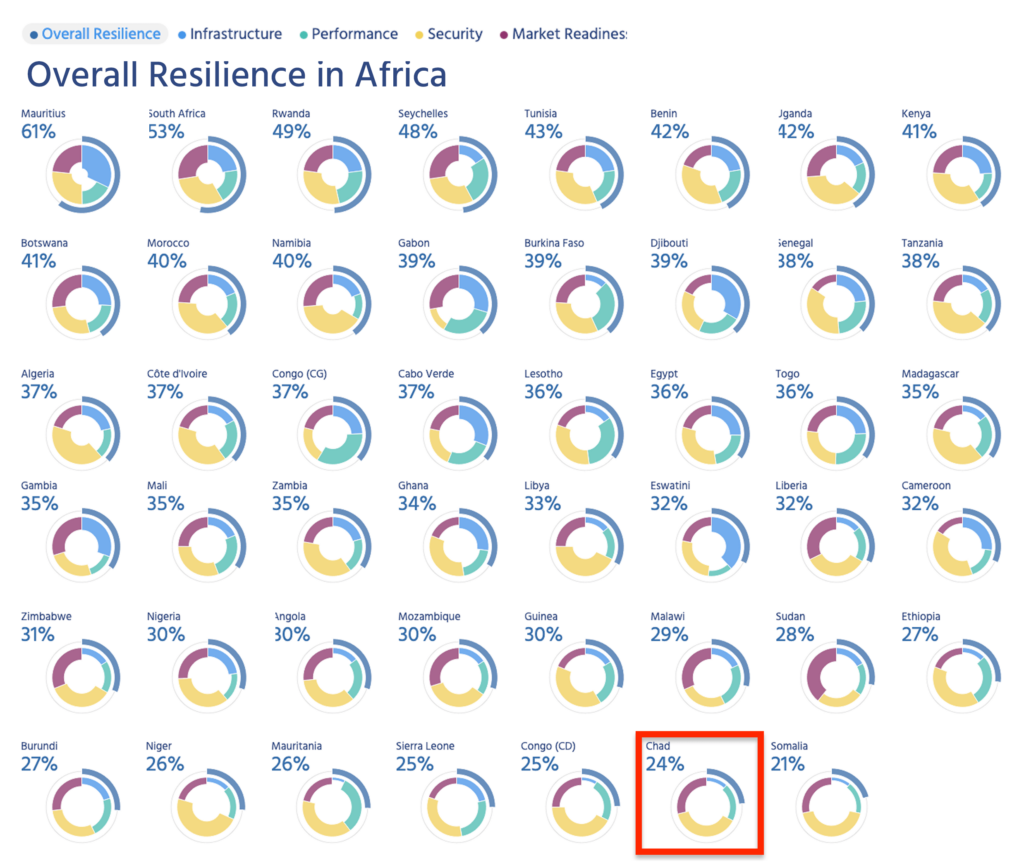
If we drill down into its Internet Resilience profile (Figure 3), we can see several areas where Chad scores low on resiliency, particularly in Internet Infrastructure and Performance.
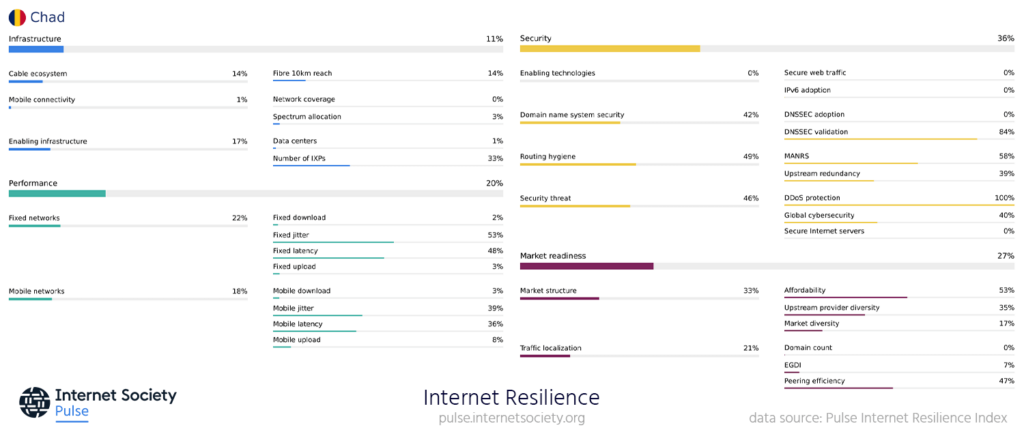
In terms of Internet Infrastructure, there are two critical challenges the country faces that may be playing a part in the current non-intentional outages they are facing:
- A lack of international links – being a landlocked country, Chad relies on its neighbors to access international fiber connectivity. This is primarily via three cross-border terrestrial fiber links to Sudan and Cameroon.
- A lack of Internet Exchange Points (IXPs) – Chad has only one IXP, managed by the Agence de Développement des Technologies de l’Information et de la Communication (ADETIC). IXPs play a critical role in keeping local connectivity flowing in the event of a break to International links. While its neighbor Sudan has only one IXP, it enjoys more international resiliency with terrestrial fiber links to Ethiopia, Egypt, South Sudan, and Chad and submarine cable links via Port Sudan.
A failure or disruption of either the single IXP or the three main international links would seriously impact the connectivity available in the country. Satellite could provide some redundancy; however, reports show there is limited use of low earth orbit (LEO) in Chad, with Starlink still seeking a license from the regulator as of September 2023.
Regarding Internet Performance, data from Ookla for 2023 shows that the median download speed for the best-performing mobile connectivity was 15.5Mbps (ranked 127th globally) and 12.9Mbps for upload speeds. It’s worth noting that this differs considerably from Cloudflare data, which shows that in the last 12 months, the median mobile Internet download speed has been 4 Mbps.
Given its geographic size and the spread of its 17M population — 24% of the population lives in urban areas — improving coverage and mobile Internet performance will be critical for increasing the number of Internet users in the country (currently ~3M).
Building on Successes
While there are many challenges associated with Chad’s Internet resilience, a few successes are worth highlighting and from which the country can hopefully build upon to improve its overall resilience.
The most notable is the number of Internet users in Chad who benefit from increased online security thanks to the widespread usage of DNSSEC-validating DNS servers, with a reported 77% usage. Chad’s overall domain name system security resilience could increase significantly if the country code top-level domain (.td) adopts DNSSEC.
The country also has a 100% level of protection against distributed denial of service (DDoS) attacks, according to CyberGreen. And it has an improving routing security resilience score of 49% thanks to the growing number of networks adopting routing security best current practices, including signing route origin authorization for their IPv4 and IPv6 address space.
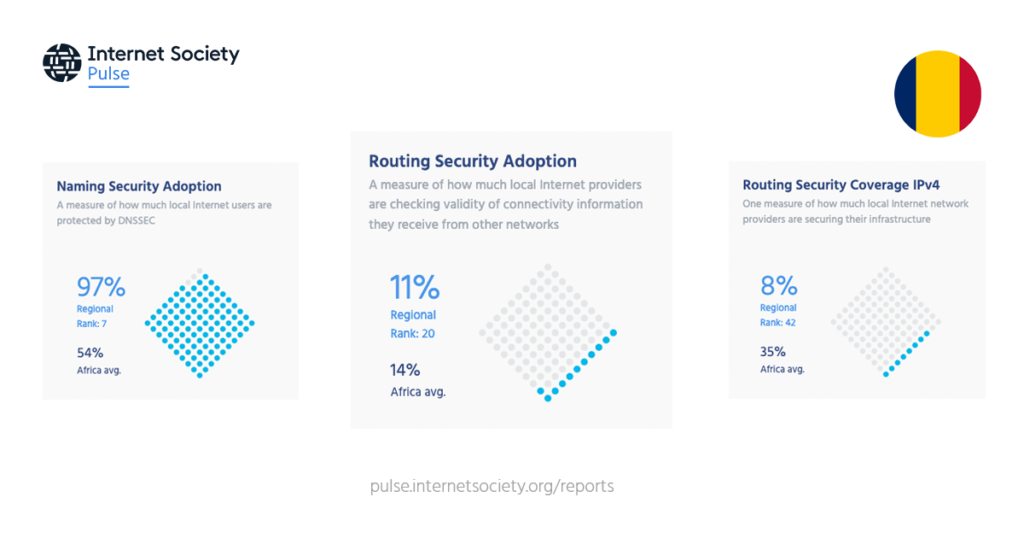
Despite its lack of IXP redundancy, data from PeeringDB shows at least nine networks peering at the IXP, representing almost all visible networks in Chad. This means there is a high level of peering happening in the country, and most local traffic stays local, reducing the cost of international transit and overall latency.
Finally, Chad’s Infrastructure resilience score may improve shortly thanks to the proposed Trans-Sahara Optical Fibre Backbone (TSB) Project (scheduled for completion in 2025), which involves laying 1,510 kilometers of optical fiber cables across Niger, and Chad to provide alternative access to international traffic through the Algerian and Nigerian coasts.
Photo by Nova Bubba via Flickr.

